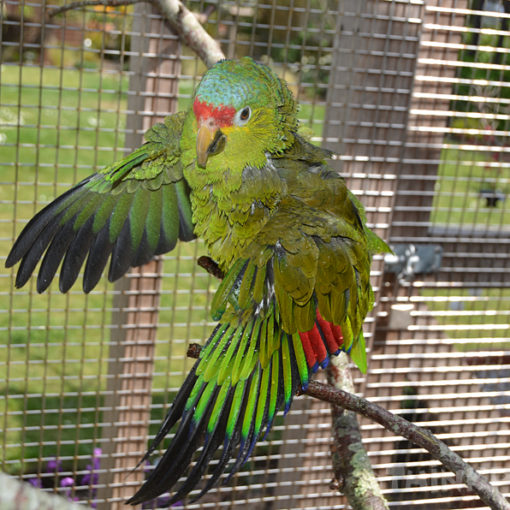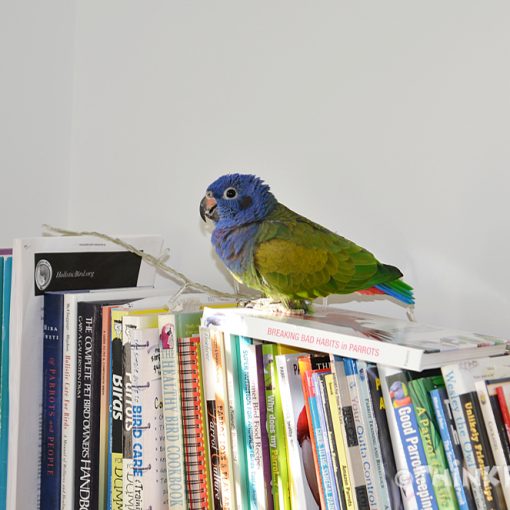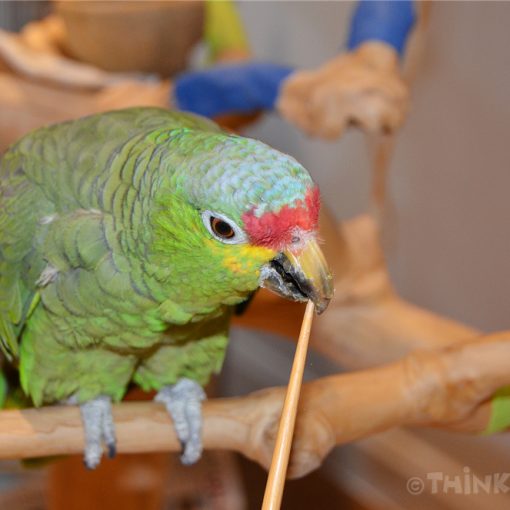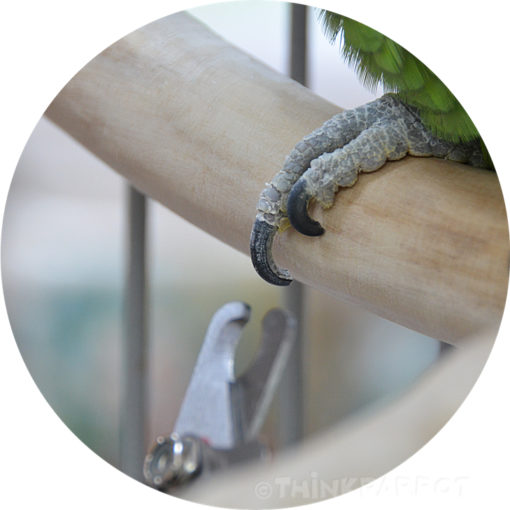Shaping is a wonderful tool to teach your parrot any single behaviour without force.
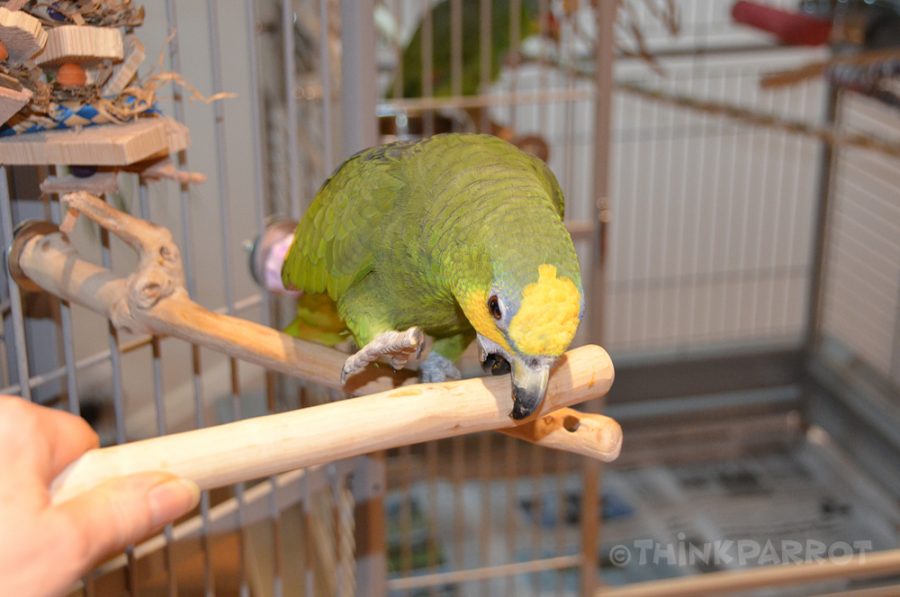
Shaping is breaking down the goal behaviour (in this case, the step up) into tiny manageable steps which are reinforced along the way.
You can shape the step up onto your hand, arm or perch. Some parrots have a strong fear response to hands, in which case it can be a good idea to shape stepping up onto a hand held perch. Choose a perch that the bird is already familiar with so that the process of desensitization is minimal.
Systematic Densitization
Before we can even begin shaping the step up we may have to introduce our parrot to the hand held perch using systematic desensitization.
Systematic desensitization is very gradually exposing the parrot to the perch (or any other fear eliciting stimulus), never provoking anything stronger than a very mild response. We might start by leaving the perch at the far side of the room and gradually move it closer to the parrot, all the time making sure he is showing relaxed body language as the distance between them decreases. It may take hours, days or weeks.
Positive Reinforcement
The closer we get, we might also introduce positive reinforcement in order to pair the perch with something desirable, like a treat. Our aim is to eventually be able to hold the perch close enough to begin shaping the step up.
Ollie the Orange-winged Amazon used to be fearful of this perch. Here it is being paired with the lovely experience of a head skritch. This might not be a good idea as sometimes, instead of stepping up on the perch, Ollie puts his head down for a skritch.
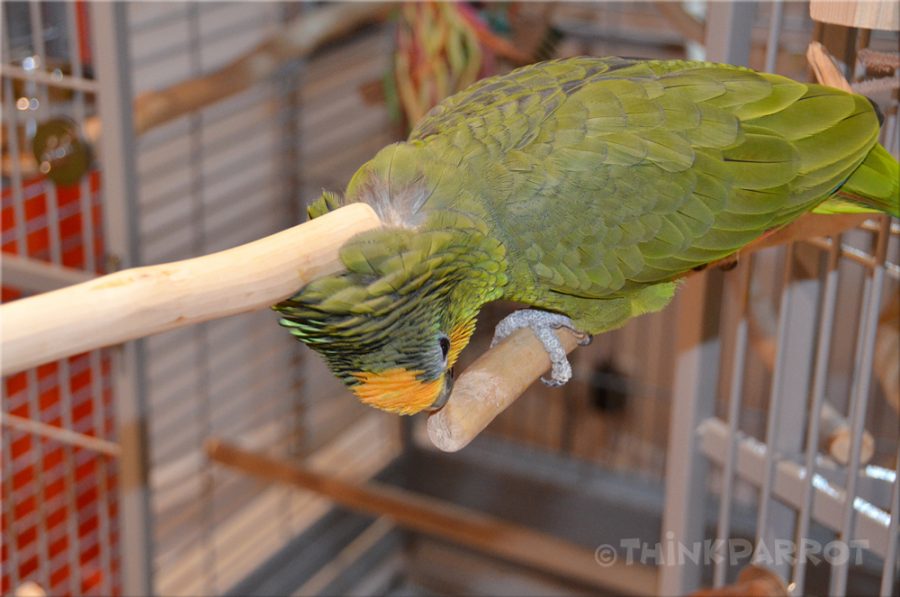
Now that we have successfully desensitized our parrot to the perch, let’s shape the step up. Again we take our cue from the parrot – we go as fast or as slow as he leads us.
Shaping the step up
First we should be clear about our goal behaviour and what we intend to use as our reinforcer.
Goal behaviour: Ollie steps up onto a hand held perch
Reinforcer: Pieces of cashew (because they are one of Ollie’s favourite treats).
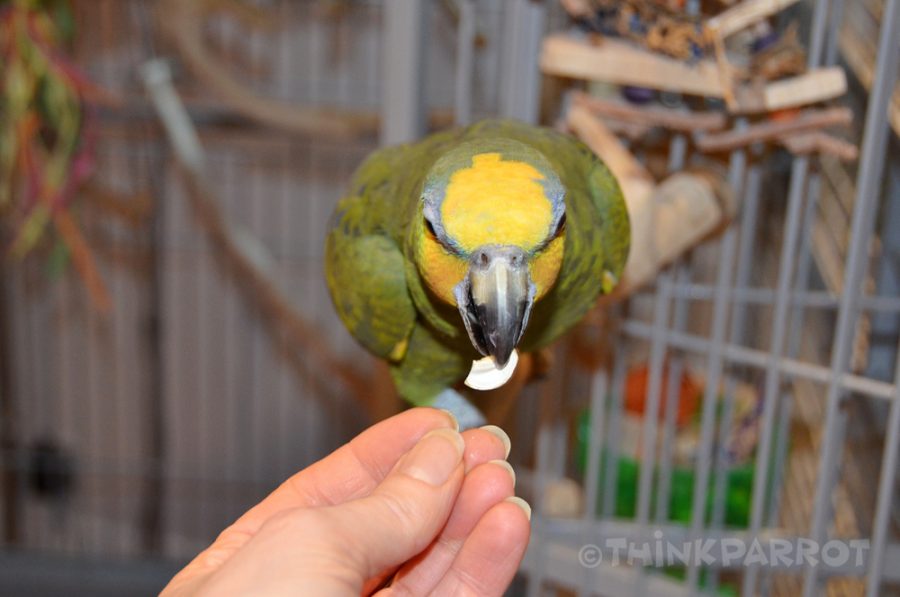
We are going to reinforce each successful step or approximation with a piece of cashew.
Approximations
These are a series of tiny steps towards the final goal behaviour. Listed 1 – 7 are examples of the behaviours we are looking to reinforce and underneath our response. Our parrot may skip a few of these steps or he might need them all and more:
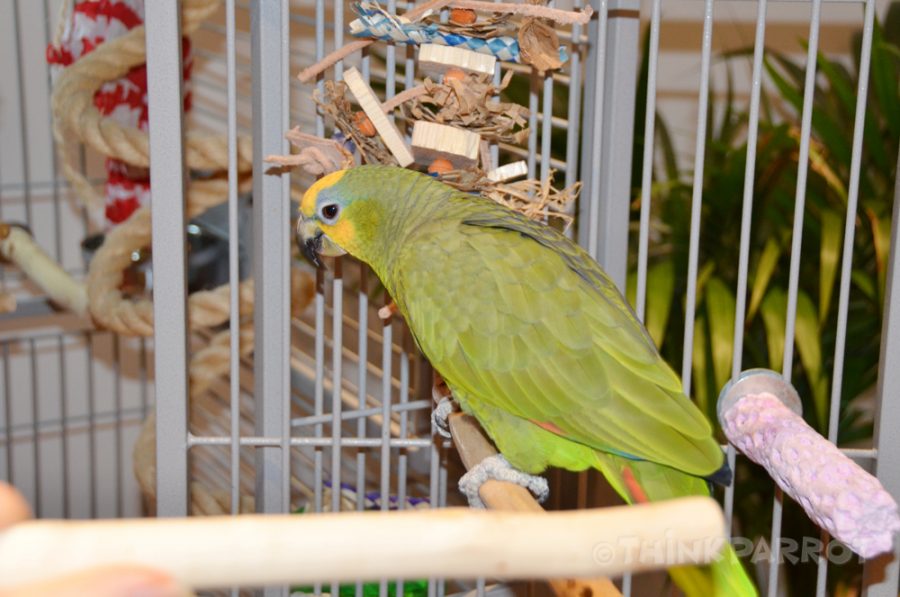
1: Bird looks at perch
YAY – TREAT!
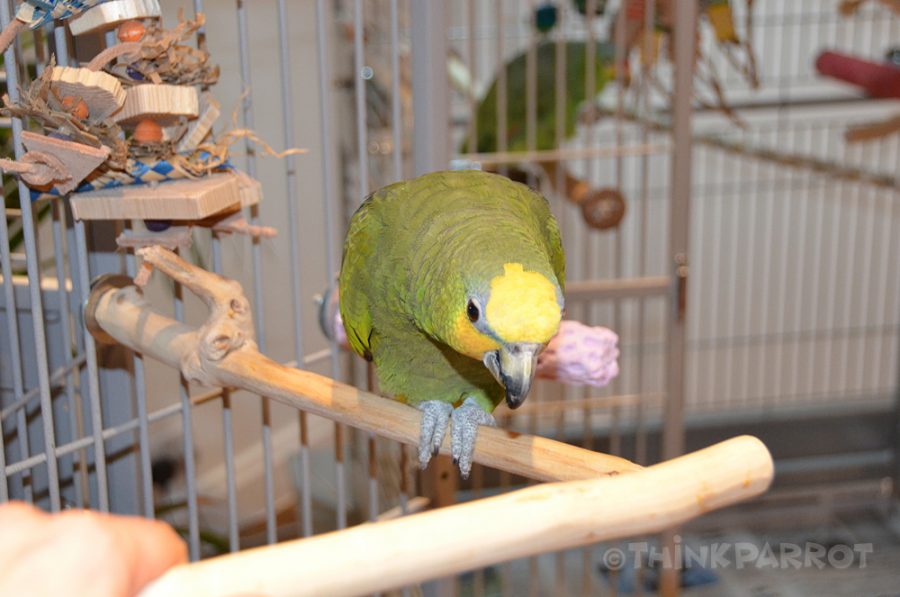
2: Bird turns body towards perch
TREAT!
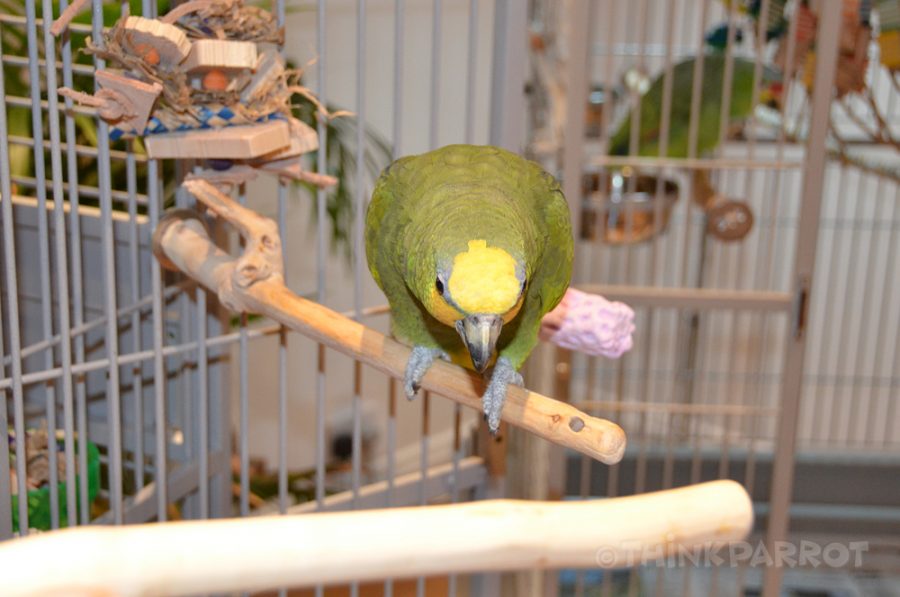
3: Bird takes one step towards perch
TREAT!
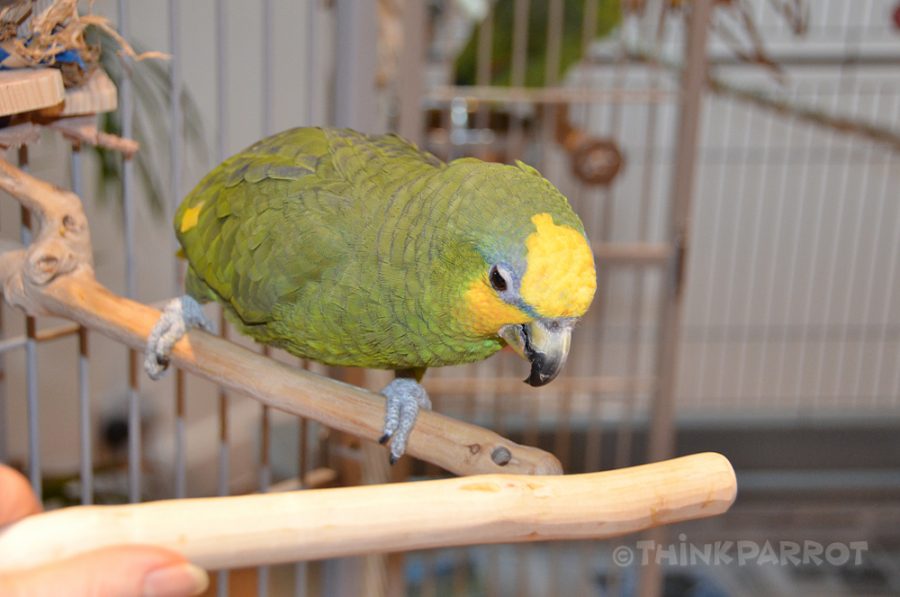
4: Bird takes second step towards perch
TREAT!

5: Bird lifts one foot towards perch
TREAT!
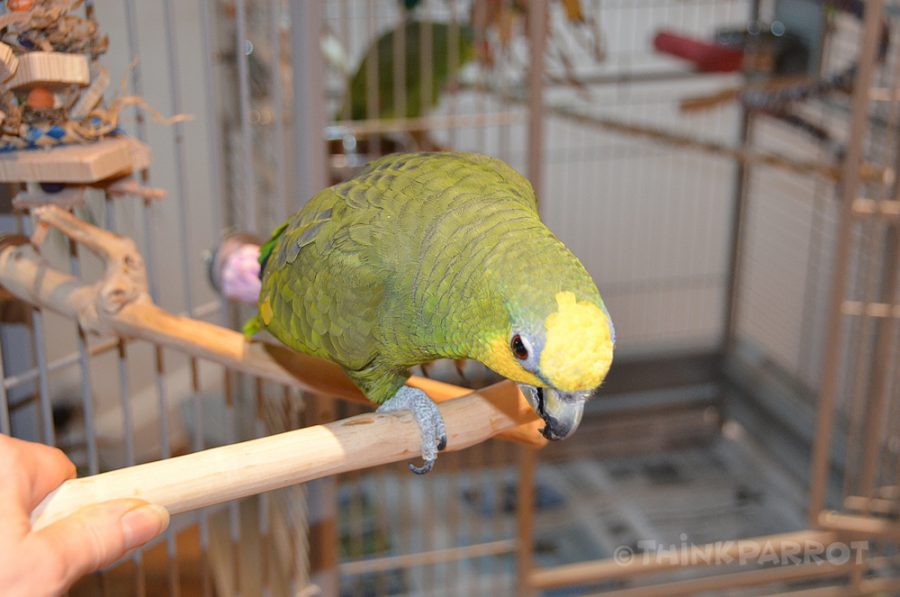
6: Bird places that foot on the perch
TREAT!
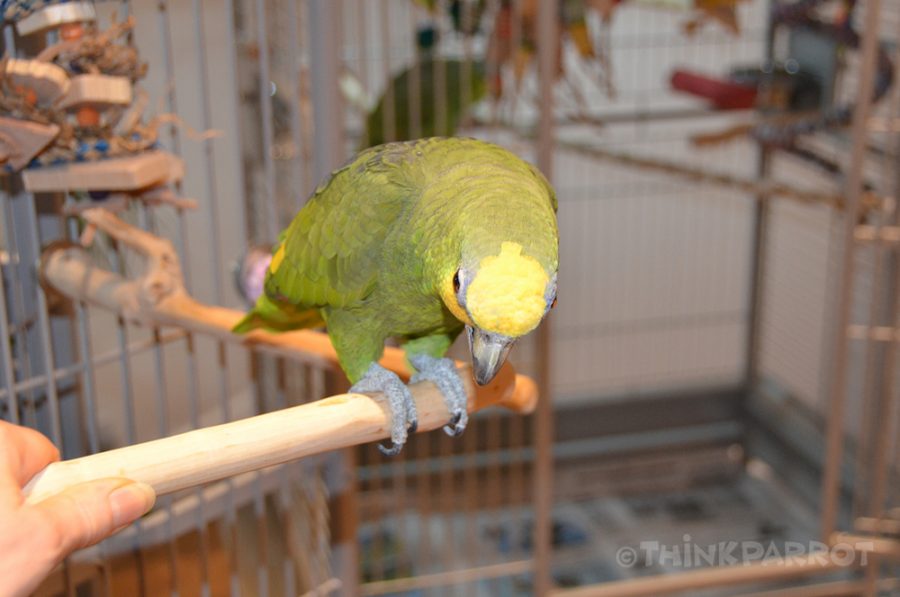
7: Bird lifts other foot and places it on the perch
TREAT!
Only the last behaviour in the chain of behaviours is reinforced ie. once the bird achieves steps 1 and 2, only step 2 is reinforced. Then once steps 1, 2 and 3 are completed only step 3 is reinforced, etc. The bird might move very quickly through the steps or he might get stuck on one, in which case we would go back to the last one he did correctly, and then work back up using smaller steps. Wherever we decide to end the training, we always end on a successful approximation. Only train in short bursts and stop WAY BEFORE the parrot loses interest.
Important!
As soon as the bird is perching, we immediately give him the opportunity to get off again. That way he is in control and he will be more likely to step up again the next time.
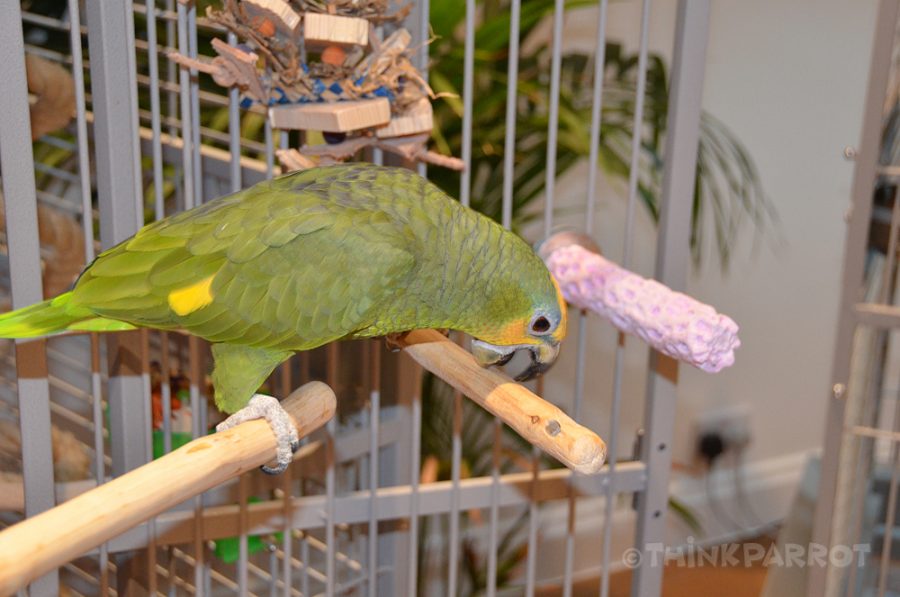
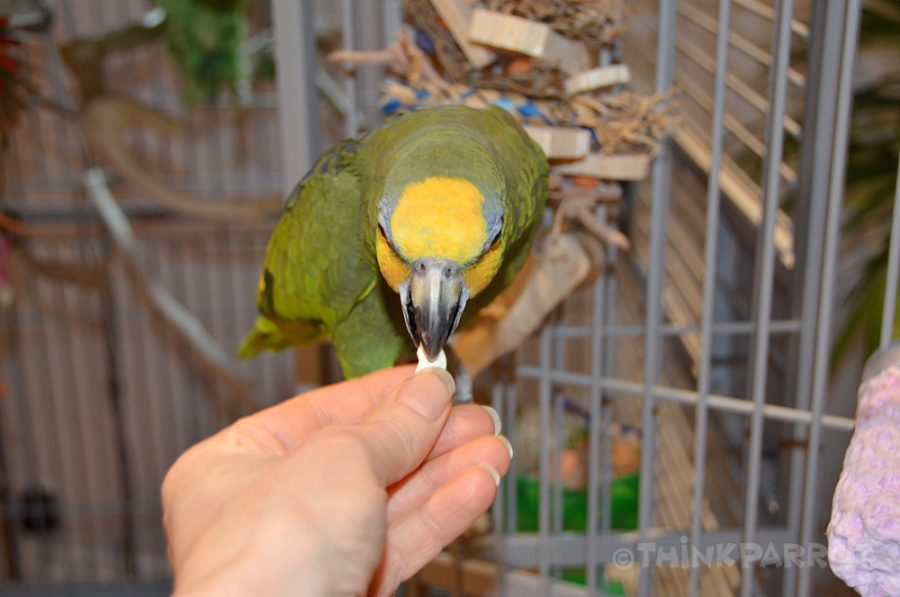
Bribes and Lures
At the beginning showing the bird the treat may help to kick start the behaviour. Bear in mind that this is a bribe or lure (because it comes before the behaviour) and should be faded out as quickly as possible by beginning to hide it in our hand.
Alternative method
Steps 1 – 7 can also be done another way, by free feeding. The bird eats broken up treats or seed out of our hand or a dish, and as we move the feeder hand (or dish) up our arm or along the perch, he will follow. It’s like a dance… one step forward, maybe a step or two back, then forward again. The parrot begins to pair good things (food) with the arm or perch he is stepping onto.
Training duration (amount of time the bird is on the hand held perch)
Next would be increasing the length of time the bird remains on the perch and/or we might want to start moving the perch. Standing on a moving perch is a very different sensation to standing on a static perch. It needs to be trained. The next steps might be…
Bird grips perch as it moves a centimeter (treat! And let him step down again)
Bird grips perch as it moves two centimeters (treat! And let him to step down again)
And so on…
I taught Ollie to step up from inside his cage as he was “cage bound” for the first 1.5 years of living with me. I used desensitisation to get him used to the perch and me. After shaping the step up, I very gradually brought him towards the cage door and then through the door. Then a few steps away from the cage. Next I began turning a semi circle to briefly block his view of the cage and back again. The whole process took months – perhaps as much as a year, since back then he would only take a huge palm nut from me. Because he could only have one palm nut a day I could only ask for one approximation a day.
After 1.5 years of very brief training per day he suddenly flew out of his cage and landed on some hanging toys the other side of the room. It happened to be Christmas day and the best present I could have! His world became a bigger and more enriching place from that moment on.
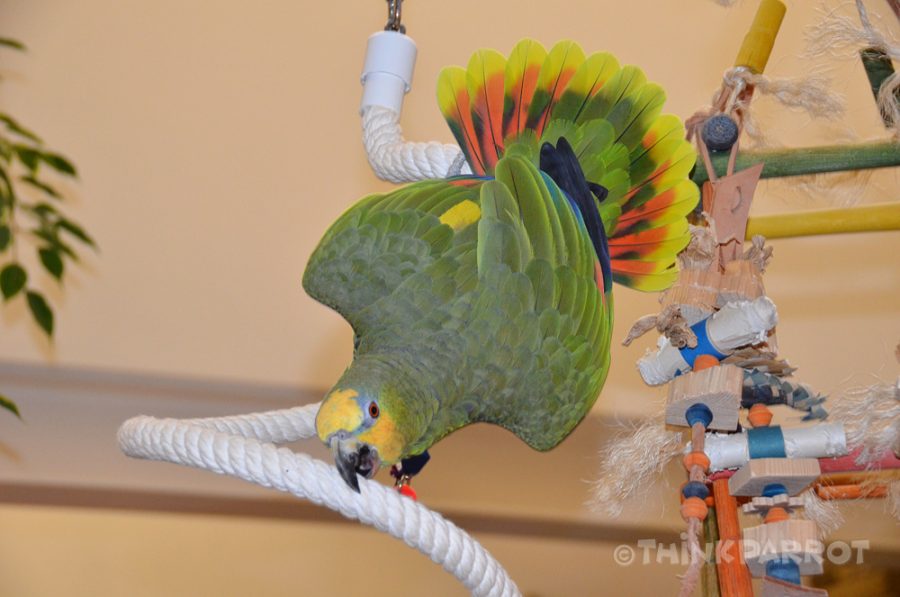
Check out these great resources:
Dr Susan Friedman’s http://www.behaviorworks.org/index.html
Lara Joseph’s https://www.theanimalbehaviorcenter.com/
Barbara Heidenreich’s http://www.goodbirdinc.com/

